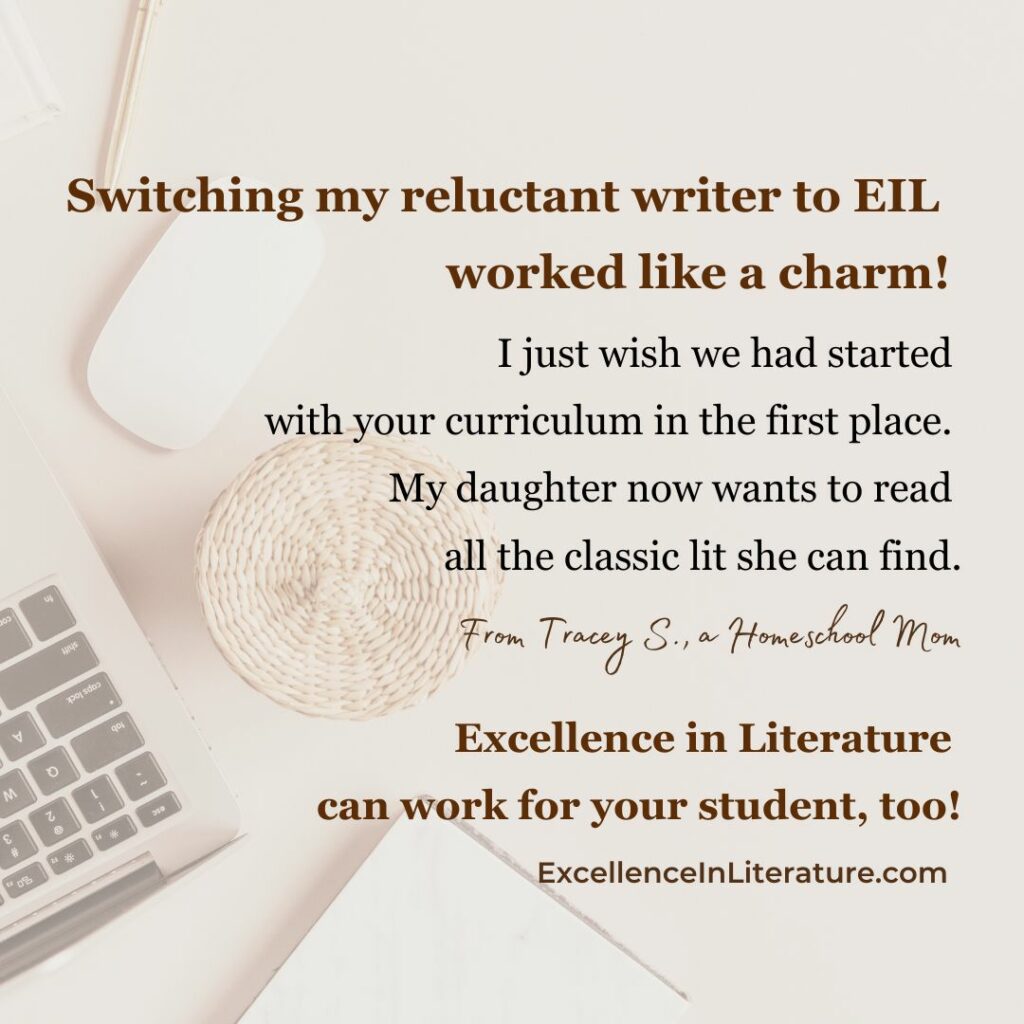7 Alternatives to Writing a Literary Analysis
There are many ways to approach the study of literature, but the default method is usually writing an analytical essay. There are good reasons for this – writing an analytical essay causes students to think critically, organize thoughts, sequence ideas, and compose an acceptable piece of writing. It’s an excellent way to prepare for college writing or a debate team, and it’s good for boosting general literacy and understanding. However, essay writing is not the only tool for studying literature. Students can benefit from approaching the great books in a fresh way, so here are a few alternatives to writing a literary analysis.
7 alternatives to the analytical essay
1) Graphic novel
Transform the story into a graphic novel (a story told in pictures and short text like a comic strip). Do this by condensing the action into comic-strip-length segments and illustrating it with drawing, painting, photography, collage, or other medium. This works best for short works or story poems, but you can also do as an abridgment of a full-length novel.
If you are not familiar with graphic novels, you may want to read a few to get acquainted with the format. Two examples of worthwhile graphic novels are the classic TinTin series by Hergé for younger readers (fun for older readers too!) and the Maus books by Art Spiegelman for more mature readers. Like comic strips, graphic novels can be either funny or thought provoking. TinTin is most often funny, while Maus is a powerful, sobering story based on the author’s parents’ experience in the Holocaust.
2) Creative summary
Write a chapter-by-chapter creative summary of a book, with quick sketches that recall the main event of each chapter. There are three primary ways I like to do this:
- Use the style of Jules Verne’s chapter titles to write a mini-summary that captures the essential point of each chapter. One example from Around the World in Eighty Days: “Chapter 11: In which Phileas Fogg secures a curious means of conveyance at a fabulous price.”
- Write the short summaries in poetic form as found in The Fairie Queene by Edmund Spenser. Spenser was writing in the sixteenth century, so his use of language may seem strange and unfamiliar. A closer look, however, will show you that most of the differences are simply differences in spelling. You may want to have your students use the style of the book they are reading to make the poetic summaries evoke the mood of the text. Here is an example from The Fairie Queene, Book I, Canto i:
“The Patrone of true Holinesse,
Foule Errorur doth defeate:
Hypocrisie him to entrappe,
Doth to his home entreate.”
- As a bonus assignment, you can make your creative summary into a mini-book.
3) Timeline
Compile a timeline of events that take place in the story; illustrations are optional, but can be a lot of fun.
4) Character chart
Create a character chart that includes each character’s name, the page on which he/she first appeared, and role in the story. You could make this look like a mind map or a family tree.
5) Journalistic article
Write a news or feature article based on events in the book. Use the correct journalistic format for the type of article you choose to write. If the book is long, you may want to create a four-page newsletter focused on the people, places, and events in the novel. For example, if you are working with A Connecticut Yankee in King Arthur’s Court by Mark Twain, you could have articles about
6) Poem or screenplay
Retell the highlights of a story in the form of a poem or screenplay.
7) Embody a character
Write five journal entries or blog posts in the voice of one of the characters of the novel you are studying.
Sometimes a creative writing assignment can be not only a welcome break in a heavy academic load, but also a way of understanding even more deeply than usual. What sort of creative assignments have you tried?
You might also enjoy “Great Literature is Great Because it’s Sticky,” “Telling the Truth in Fiction,” or “Learn Like Leonardo daVinci with Living Books and Learning Journals.”
















Great ideas — thank you!
Thank you for this. It gave me an idea for creating an in class activity in which students play different roles in analyzing a character. I will use this idea for “The Trial of Wing Biddlebaum” the protagonist of Sherwood Anderson’s “Hands.” We will make sure that Wing gets his “due process!”
What fun! I can guarantee that your students will remember the trial long after a regular paper is forgotten. Thank you for stopping by!
These are going to be fun to use with my two kiddos, 13 and 15, esp my son. Your comment about Diary gets me wondering why these sorts of things are not the norm, and the literary analysis the exception, if a primary goal if for the students to absorb the content of the literature. Hmm… guess now I am wondering what the goal of studying the lit is.
What an interesting train of thought! I think for some teachers the goal of studying literature is to check a box so the student can get into college. My goal is to open a door into wonder, show students how to understand and love literature, and teach them to write both artfully and insightfully. The thing I enjoy about EIL is that I get to share many of my favorite books with a lot of people! Thank you for visiting!